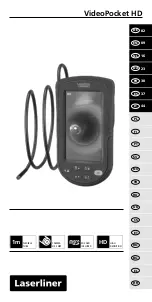
3 START UP
9070
3
START UP
9
Open the transmitter unit’s door and remove the face panel. Verify that the switch
next to the battery is set to “ON”. Replace the face panel and secure it with the
four plastic fasteners.
9
Power up the monitor at the external source and set the Range Switch to
“AUTO”.
9
Unpack the hydrazine electrode and carefully remove the hydrazine gel syringe
and plunger.
9
Verify that the clear outer jacket of the sensor is firmly in place. Locate the gel
filling hole near the bottom of the jacket and the air vent hole near the top of the
outer jacket.
9
Use either a knife or a pair of scissors to remove the plugged tip of the gel-filled
syringe. Be careful not to remove too much of the tip, as the syringe will no
longer fit into the gel filling hole in the sensor outer jacket. Verify that the gel is
an even, dark color. Discard gel that is brown, green, gray or dry.
9
Place the syringe tip into the gel-filling hole. Make sure the air vent hole is
unobstructed. Depress the plunger of the syringe to force gel into the round space
between the sensor and outer jackets. Continue pressing until the entire jacket is
filled with gel and gel starts to force out through the air vent hole. Remove the
syringe and discard any remaining gel.
9
Cover both filling and vent holes with Teflon pipe tape. Wrap each hole with
three to four turns of tape.
9
Snap the assembled sensor into the two mounting clips on the sample panel. The
hose barb at the bottom of the sensor should point toward the lower left corner of
the sample panel.
9
Connect the “J” bend tube to the hose barb at the bottom of the sensor, but make
sure that the sensor does not push out of the outer jacket.
9
Fill the Buffer solution container with ammonium hydroxide—see Section 6.
9
Open the shut-off valve
upstream
of the sensor unit and adjust the valve until the
sample is overflowing from the constant head unit. See Section 8 for the
maximum and minimum flow rates.
9
Allow at least one hour before going on to the next step.
12
















































